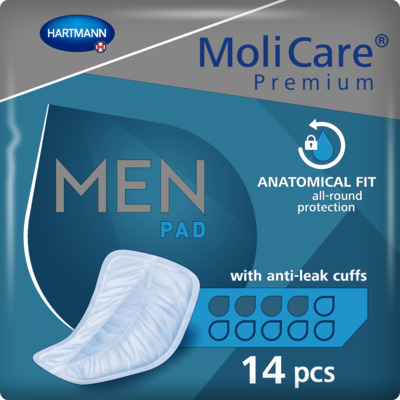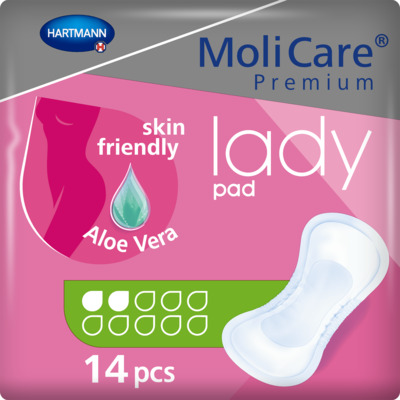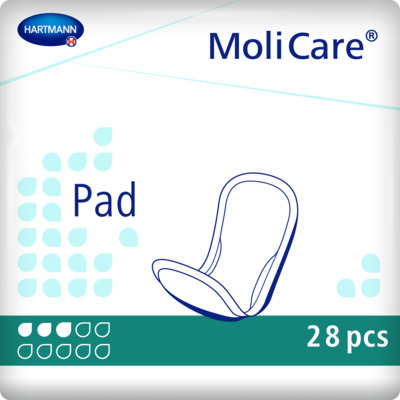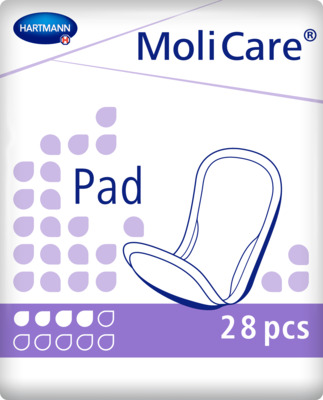Incontinence Advice
Understanding functional incontinence: causes and treatments
Anyone living with incontinence knows just how embarrassing, uncomfortable, and frustrating it can be. Functional incontinence, the inability to make it to the toilet when you need to go, can add to the stress. Read ahead to learn all you need to know about functional incontinence.

What is functional incontinence?
Functional incontinence is a type of urinary incontinence that can affect people with cognitive impairment or mobility difficulties. Despite being aware of the need to go to the toilet and urinate, for certain reasons they cannot get to the toilet in time.This can result in a leaking urine or fully emptying the bladder. This condition not only causes embarrassment for the person, but can also lead to irritated skin and discomfort.
Simple steps to avoid functional incontinence
Underneath are some easy-to-follow tips to help with functional incontinence. By making a few lifestyle changes and being proactive, you can reduce the risk of accidental bladder leakages.
- Daily pelvic floor exercises
Pelvic floor exercises can help to strengthen the pelvic floor muscles and prevent incontinence. Using these exercises, you might be able to hold your urine in for longer periods of time. Most people need to practice these exercises for at least 3 months before they notice a difference.
- Quitting smoking
People who smoke are likely to cough more than others, and this increases your chances of bladder leakages. Coughing strains your pelvic floor muscles, weakening them over time. Quitting smoking not only improves your overall health but also reduces the risk of bladder leakages. We recommend consulting with a pharmacist or your GP for guidance on quitting smoking.
- Assess your exercise routine
Despite experiencing functional incontinence, many people still take part in exercise. While going to the gym is generally beneficial, it's important to avoid high-impact exercises that can exert additional pressure on the pelvic floor muscles and potentially increase the risk of bladder leakages. Sit-ups should also be avoided as they can strain these muscles further.
Instead, focus on exercises like pilates and yoga which can be highly effective in strengthening the pelvic floor. These activities are known to promote better control in people managing incontinence.
Looking for inspiration on how to stay active while managing incontinence? Discover our recommended tips and strategies by clicking here.
- Avoid lifting heavy objects
Make sure that you cross weightlifting off of your gym routine, and avoid lifting heavy objects around the house.
You can read more about weightlifting and incontinence, we have a comprehensive article available. You can find it here.
- Get down to a healthy weight
Being overweight can contribute to functional incontinence. Obesity weakens your pelvic floor muscles, and the pressure of fat tissue on the bladder can cause leakages. In the most extreme cases, a person’s weight can prevent them from getting to the toilet in time.
- Prevent and treat constipation
When you strain to empty your bowels, it weakens your pelvic floor muscles and will make urine leakage worse in the long run. If you find that you are suffering from constipation on a regular basis, add more fibre to your diet, drink plenty of fluids and ensure you are getting enough exercise.
- Say ‘no’ to caffeine
Caffeine irritates and stimulates the bladder, making any kind of incontinence worse. Switch to decaffeinated coffees or teas, and drink more water.
- Cut down on alcohol
Similar to caffeine, alcohol is a diuretic. This means that it will cause you to urinate more often. If you suffer from functional incontinence, this means more trips to the toilet, and more chances for an accident.
We explain how alcohol dehydration can affect your bladder and bowel function in this article.
- Drink plenty of water
People suffering from functional incontinence are often worried about drinking too much water, as they worry about using the toilet too often. But drinking too little can cause problems. The recommended guidance is to drink 6-8 glasses of water a day keeps your body hydrated and prevents urine from becoming too concentrated.
What causes functional incontinence?
Functional incontinence can be caused by a number of different factors, with the most common cause being the inability to reach the toilet in time. This may be due to problems removing clothing quickly enough, transferring from a wheelchair to the toilet, or mobility problems which hinder walking. There are some commonly associated illnesses and conditions of functional incontinence which include:
- Musculoskeletal problems, such as arthritis or severe back pain
- Neurological problems, including multiple sclerosis (MS) and Parkinson's disease
Cognitive issues can also play a significant role in functional incontinence. For example, people with Alzheimer's disease or other types of dementia may struggle to plan or recognize the need for the toilet. Even when they recognize the urge to urinate, they might be unable to find the toilet in time.
Although modifications can be made to a person's home to help them with easier and quicker access to the toilet, functional incontinence remains challenging to manage outside the home. Public toilet facilities may not always be accessible or designed for easy use by individuals with disabilities.
When should you seek medical advice?
You should always seek medical advice when you first start noticing any signs of bladder weakness or incontinence. If you find yourself unable to reach the toilet in time, it's essential to consult your GP for assistance and guidance. Diagnosis of functional incontinence
When you visit a doctor about your symptoms, they will thoroughly assess your medical history. They will likely ask you questions about any medications you take and illnesses that you are suffering from. They will also want to know about your general physical health.
These topics include:
- Diet
- Past or present illnesses
- Family medical history
- Hydration
- Exercise routine
- Your general mobility
While you are in the GP’s office, they might do some routine and simple tests, including a urinalysis, in which they screen your urine for abnormalities. This might be done in the surgery, or you might be sent to an off-site lab. Additional tests could include pelvic floor strength tests, bladder strength tests, and checking for any abnormalities in your urinary tract.
Treatments for functional incontinence
No matter what kind of treatment is recommended, ensure that you have reliable incontinence products to regain your confidence and independence while you seek treatments to get the problem under control.
For functional incontinence, the most important factor is the underlying cause. If you can improve mobility, clearly signpost where the toilets are for example, you may be able to reduce instances of incontinence.
Behavioural treatments designed to help other forms of incontinence might also be helpful for reducing accidents. Your doctor might suggest the following treatments and strategies:
- Scheduled urination
You or your carer can set a schedule for your trips to the toilet. This is ideal for preventing the need to get to the toilet in a hurry. You can relax and take your time, assured in the knowledge that you will make it in time.
For people with cognitive impairment or dementia, a person might not recognise that they need the toilet, and so a schedule can help prompt them to go before an accident happens.
- Bladder training
This is a time-honoured technique that can lengthen the time between your trips to the toilet. Start by going to the toilet and attempting to urinate every two hours. If you feel like you need to go again before the next 2 hours are up, stand still and contract your pelvic floor muscles. Concentrate on reducing your urge to urinate. Once it is under control, make your way to the toilet.
Work on staying dry and avoiding accidents for 3 full days. Once you reach this goal, slowly increase the intervals between using the toilet, until you can make it for three to four hours without feeling the urge to urinate.
- Pelvic floor exercises
Pelvic floor exercises are designed to strengthen the series of muscles that support and control the bladder and urethra and can be done by men and women.
Tackling functional incontinence
By using the techniques mentioned, you can reduce the risk of functional incontinence and potentially eliminate the problem. Remember, you don't have to suffer in silence. If you experience recurring episodes of incontinence, seek help from a medical professional as soon as possible.
Additionally, while following a treatment plan, you can rely on MoliCare incontinence products for added support. Our range of high-quality products is designed to provide comfort, security, and reliable protection during your journey towards managing incontinence.

MoliCare® Premium Men Pad 4 Drops
<h2>Comfortable and absorbent</h2> <p>Why MoliCare for men? Hers are some of the key features of the MoliCare® Premium Men Pads from Hartmann:</p> <ul> <li>Discreet and comfortable</li> <li>Fits the male physique</li> <li>3-layer absorbent core</li> <li>Fast-absorbing system</li> <li>Anti-leakage cuffs</li> <li>Odour neutralisers</li> <li>Wide adhesive strip</li> <li>Skin-friendly</li> </ul> <p>With an affordable price and great quality guarantee, you cannot regret choosing MoliCare® Premium Men Pad 4 drops, equipped with anti-leak cuffs, and 14 pieces per bag.</p> <h2>Slim and discreet under clothing</h2> <p>MoliCare® Premium MEN Pads offer reliable support for men dealing with bladder weakness. Whether it's stress incontinence or urge incontinence, these pads for men are designed to provide a discreet and quick solution on the go. Simply place the pad before applying your underwear and secure it with the adhesive strip for worry-free protection. MoliCare® Premium MEN Pads offer full coverage for men facing very light to moderate bladder weakness.</p> <h2>Leakage protection for men</h2> <p>MoliCare® understands that each individual's incontinence needs are unique. That's why our incontinence products, including MoliCare® Premium MEN Pads, are available in different absorbency levels. You can find the perfect fit and protection for your specific requirements.</p> <h2>Reliable and soft on the skin</h2> <p>Our body-shaped absorbent pads are designed to deliver dependable and skin-friendly incontinence protection every day. Experience discreet comfort with the soft, cotton-like materials and the added benefit of an odour neutraliser, ensuring you feel fresh and confident throughout the day.</p> <h2>Fast delivery to your home</h2> <p>At HARTMANN Direct, we ensure a fast delivery service for all our products. Enjoy free delivery on orders over £50, making it convenient and hassle-free to receive the incontinence products you need. Our dedicated customer care team is here to discuss your incontinence product needs and answer any questions you may have. Call us today on 0800 028 9470 to experience the comfort and confidence that MoliCare® Premium MEN Pads can provide.</p>
MoliCare® Premium Lady Pad 2 Drops
<h2>Skin Friendly Pant Liners</h2> <p>For women that experience slight incontinence and bladder weakness, across different age groups, it can be a challenge to find the right bladder weakness product that is easy to apply and wear without the worry of potential leakages. Fortunately, we understand this approach, hence why we are happy to offer our MoliCare® Premium Lady Pad 2 drops, that is skin-friendly, Aloe Vera applied, and comes with 14 liners per bag.</p> <h2>Slim and discreet liners</h2> <p>Whether dealing with stress incontinence or urge incontinence, these panty liners offer a discreet and easy solution on the go. Simply place the pad in your underwear and secure it with the adhesive strip for all-round protection. Available in different absorbency levels, MoliCare® bladder weakness products cater to all levels of bladder weakness, ensuring secure care.</p> <h2>Control Bladder Weakness</h2> <p>Enjoy the benefits of these body-shaped absorbent panty liners, designed for women with bladder weakness. The pads offer discreet, reliable protection with features including odour control and fast absorption.</p> <p>With a wide adhesive strip, you can comfortably fix the pad in your regular underwear, providing secure and comfortable fixation. The pads are skin-friendly, featuring soft, breathable materials, including foam cuffs, and a top sheet treated with Aloe Vera.</p> <p>Keeping your skin healthy is a priority, which is why MoliCare® Premium Lady Pads have a skin-neutral pH value of 5.5 and an antibacterial finish. They are also dermatologically tested, offering peace of mind.</p> <h2>Buy pant liners online</h2> <p>Never worry about running out with our convenient order service and fast delivery direct to your door. Enjoy free shipping on orders over £50.</p> <p>If you need assistance, our professional customer service team is here to support you in choosing the right product. Reach out to us today at 0800 028 9470 and experience the comfort and reliability of MoliCare® Premium Lady Pads.</p>
MoliCare Pad 3 Drops
<h2>Incontinence pads for men and women</h2> <p>Protect yourself against slight bladder weakness with the MoliCare® Pad 3 drops. Suitable for men and women, offering an ideal solution to regain control and live your active life without interruptions. Slimline, discreet, and contoured to fit your body, these incontinence pads ensure a comfortable and barely noticeable feel, providing exceptional dryness and protection for slight incontinence.</p> <p>Crafted with soft, skin-friendly fabric and a polyester backsheet, these incontinence pads ensure you can confidently go about your day, secure against minor leaks. The wide adhesive fixing strip keeps the pad securely in place, while the super absorbent core wicks moisture away from your skin. The elastic anti-leak edging adds an extra layer of reassurance, and odour neutraliser keeps you feeling fresh and confident. With the MoliCare® Pad 3 drops, you no longer need to let slight or occasional incontinence hold you back from enjoying life to the fullest. Simply adhere the pad to your underwear, and you will barely feel the difference.</p> <h2>Price match promise</h2> <p>Experience convenience with our fast delivery service, bringing your chosen products directly to your door. At HARTMANN Direct, we offer a price match promise and free delivery for orders over £50, making sure you receive both quality and value.</p> <p>If you need further assistance, our customer care team is here to help. Give us a call today at 0800 028 9470, and we'll find the perfect incontinence product tailored to your needs. Take charge of your life with the reliable and comfortable protection of MoliCare® Pad 3 drops. Say goodbye to worries and hello to an active and confident lifestyle.</p>
